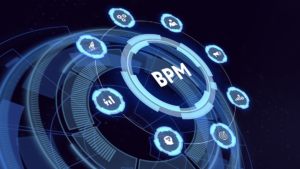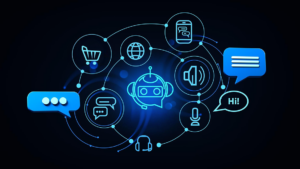

Ankita Baldava
Top 3 Strategies for Retailers to Ensure Higher Conversion Rates over Mobile Apps
Businesses for Retailers from mobile applications is booming day by day. In this cut throat competition, the main challenge is to build a top retail mobile app. In my previous blog: 10-tips-retailers-develop-compelling-mobile-experience , I have already provided tips for retailers on how to develop a compelling mobile experience. Now to understand what it exactly takes to reach the top charts ensuring seamless user experience and higher conversion rates, I would like to discuss some of the key strategies and essential components of a retail mobile application.
#1 Allow the customers to get what they want with minimal interference
Smart checkouts
Give users electronic records of their purchases i.e., send receipts via email. This is much more convenient for the users to keep the track of bills. Use a payment processor that integrates with current point of sale system. Integration eliminates manual keying-in and allows to access store data and accept payments at one place thus, centralizing the operations. Enable mobile payments which will speed up the checkout process and improve users’ experience.
Effective onsite search
Deliver the most relevant and personalized information as quickly and easily as possible to the users. Make in-app search a main priority in any mobile application. When developing an onsite strategy consider functions such as ease of use, multichannel search, multi-language support, geo-search, scalability etc. Also ensure that product images appear in search result page. Onsite search is often overlooked but it’s one of the best ways to improve customer experience and to assure higher conversion rates.
Hassle free login
Logins and registrations can be a tedious job and a big turnoff for the first-time users. Most of the users don’t sign up for a mobile app because the registration process is time consuming. Solution to this is social logins, the fastest way to get hands on the app, providing customers access to product catalogues and related services. Provide an option to synchronize user account with social networks such as Facebook, Twitter, Google Plus etc. Another way of simplifying logins would be with the help of Email based identity verification for users.
#2 Make it more compelling and convenient for the users
Augmented reality
In online shopping, customer cannot touch a product or know how it will work. The absence of interactivity in the shopping experience may lead to abandoned shopping bags. So, to achieve higher conversion rates, smart retailers should make Augmented Reality (AR) their first foray into this changing landscape. Allow users to have a 360-degree virtual view of products which helps them to analyze it. AR strategies are more engaging and allows customers to interact with brands, both in-store and off-store. For example, IKEA uses AR technology to bridge the gap between user’s perceptions and the reality of the product. AR makes it easier for users to explore options and make modifications while they are shopping online.
Shop by Scan/Voice Recognition
Make users shop at the ease of being at home by simply scanning the product barcode with the retail app and place order to the nearest store. Also, one can compare price of same product across multiple stores with a simple scan on desired brand’s mobile app. Shopping can be made more convenient for customers by enabling them to place order by voice recognition using platforms like Siri, Cortana, Alexa etc.
Chatbot integration
Chatbots can help retailers to provide their customers a personalized assistance, enhance customer services, provide product recommendations etc. It can gather data about any user, which can be further used to offer a more personalized service. Chatbots help in product comparisons and provides the customer a channel to interact with the retailer or its representatives. It can manage the entire payment process by capturing the billing details, shipping addresses and preferences.
Store locator
The store locator feature is very essential for retailers because that intimates them about customers high purchase intent based on their searches. Users can either find your locations or they cannot. Some of the things to keep in mind while integrating a store locator can be- Display 5-10 nearest locations to the user. Provide in-page links to the store locator which will be helpful for users. If locations offer different amenities, services, or products, allow users to filter the offerings. Also, include a location photo for every store.
#3 Provide customers a seamless omnichannel experience to ensure higher conversion rate
Omnichannel cart
Omnichannel marketing strategy provides users a personalized integrated shopping experience. Nowadays, delivering seamless and consistent user experience across all channels has become a necessity. With advanced technological capabilities available, create a digital omnichannel cart, no matter which channel the customer is shopping on. Users can add products to the cart for immediate purchase or can even reserve it online for later checkout thus, ensuring higher conversion rates.
Long tail product recommendation
Nowadays, users are looking for a personalized touch in their shopping experience. With long tail product recommendation, retailers can offer relevant products to the users at several shopping phases. This can be done by displaying similar products, different variant of the same product or relevant combinations of the desired product with other frequently purchased goods to make users shop for more. AI can be used to deduce user behavior and purchasing history to offer personalized user recommendations.
Personalized offers and promotions
As users have become more tech savvy, their expectations have increased. So, allure users by creating loyalty programs and exclusive offers through mobile apps which helps in providing them an optimum omni channel experience. Launch programs where users can earn rewards for making purchases without the need to scan or swipe a separate reward card, making it more convenient. Also, try to personalize your offerings based on the wants and needs of users.
Centralized uniform digital experience
Create User Interface(UI) of an application that looks and feels the same in-app, on mobile and online. The customers can get used to the environment easily without getting frustrated to search for some product or service, avoiding the need of adapting to design and structure of different channels.
Use of mobile devices has created a huge opportunity for today’s businesses. Now, choices are endless and competition is tough, so building a successful top retail mobile app is not an easy job. It requires correct balance of imagination and creativity with a data-driven mindset. Above all, dedication to provide the best user experience possible.





